Announcements
Welcome to Care of Magical Creatures!
Welcome to Care of Magical Creatures! This is the fifth year of the course. You can find the first year of the course here. Below you can find links to an optional textbook, additional pages you may find of interest, and details about when and why the course was last updated.
The Care of Magical Creatures Companion Guide
Care of Magical Creatures Facebook Page
Many artistic depictions of creatures used in this course were created by the DeviantArt user maryquiZe. We recommend checking out her work!
Course Last Updated: July 2020 for Image and Formatting Updates
Announcements Last Updated: October 2021
Lesson 7) I’m Going to Steal The Declaration of Independence
Hello students and welcome back to yet another lesson in Care of Magical Creatures. Today Professor Anne and I will be introducing three new creatures to you all, so take out your quills and listen carefully. All of these creatures do have one thing in common: their unique appearances! I think you will all enjoy what we are about to share with you. Let’s begin with the first creature of the day, the sphinx!
Appearance and Behavior
Thank you, Professor Anne! Students, pay close attention because they are rather strange creatures. The best way to describe sphinxes would be that they are basically large lions with the head of a human. They are also very intelligent and have the ability to speak human languages. Sphinxes are specifically known to have a passion for riddles and puzzles. They prefer their riddles to be rather lengthy and challenging, but tend to drop barely noticeable clues to the answer in them. Sphinxes also are very strong, particularly in their paws; some people have described them to have superhuman strength. They are very dangerous to humans; even the most skilled wizards respect a sphinx’s power and dare not test it.
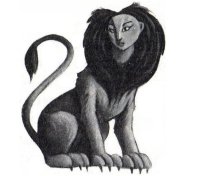
Sphinxes are given a rating of XXXX and are classified by the Ministry of Magic as a beast. However, it’s important to know that sphinxes can technically be considered beings because of their ability to speak languages and their wit. The reason why they are in the beast category is solely because of their brute strength and being susceptible to violence. However, their purpose in the world is what makes them so prone to their ferocious ways.
Another important aspect to their given rating is because of their immortality. While these creatures can die from disease or injury, they are considered one of the longest living creatures in the magical world. Unlike phoenixes, they don’t have a rebirth. Unlike salamanders, their survival isn’t dependent on another source. However, like many immortal creatures, they do have a downfall. Should a sphinx become injured, such as a limb being ripped off of them, or they contract a fatal disease, they will pass on. This rarely happens, and hasn’t been reported in several hundred years. The magic coursing through their veins allows them to overcome most illness, if they catch anything.
Diet and Habitat
These curious beasts are native to Egypt, a country in northern Africa. Sphinxes thrive in the hot and sandy deserts, and are able to go several days without water if needed. They are carnivorous and will feed off of mammals such as deer, wild cats, and coyotes that can be found in their habitat. On incredibly rare occasions, sphinxes are known to eat humans that have irritated them. This is often through an individual constantly visiting and answering their riddles incorrectly. This act is also why the sphinx is given the rating it is. Sphinxes are known to be very clean eaters; they do not dirty themselves or the area they use as a dinner table, for lack of a better term.
Though sphinxes are used to arid deserts, they are hardy creatures and can handle any type of weather and environment. This is why owning one as protection is so handy. They can adapt to any climate and habitat. They can survive in caves, forests, beaches, deserts, or anywhere else! However, while they can survive everywhere, that does not mean they prefer to. Sphinxes prefer sunlight when possible, and would rather be out where everyone can see them, rather than be hidden away.
History and Muggle Connotations
It is important to note that in Muggle mythology there are two different types of sphinx: one in Egypt and one in Greece. Their appearances are very similar; the only difference is that the Greek sphinx has wings. Differences in the gender of the sphinx is also seen. The Greek sphinx is female, whereas the Egyptian sphinx is male, giving them the name androsphinx. Both are seen as guardians, with the Greek version being more barbaric. Should an individual give a wrong answer, they would immediately be eaten.
Throughout history, the sphinx, or some version of it, has appeared in many different Muggle cultures. In Europe, they are seen in Greece and Spain. They have appeared throughout several different art eras, like the late Baroque and Symbolist eras, as well as appeared in a variety of statues over several centuries in several continents. In Egypt and West Asian countries like ancient Mesopotamia, they are represented in Hellenistic art, as well as a variety of other contexts.

“Caresses,” a Symbolist painting featuring a sphinx with a cheetah body.
It is also important to note that references to sphinxes are still present in parts of the Muggle world. The Great Sphinx of Giza is still present in Egypt, and theories are still being passed around as to why the large statue was built. The sphinx is also used as a symbol of Masonic, or Freemasonry, architecture. Sphinxes are also represented in popular culture, like in the popular Disney movie Aladdin.

Great Sphinx during excavation in 1878
A sphinx statue in front of Masonic architecture
Uses in the Wizarding World
Sphinxes have been utilized by wizards and witches alike for over ten centuries. Sphinxes have a biological need to feel like they are protecting something. It gives these sentient creatures a sense of purpose. In the past, magically gifted people have been known to use sphinxes to guard their treasures and valuable belongings. But, sphinxes will guard anything. For example, they will guard secret locations, money, family heirlooms, and even people (think of them as guard dogs)!
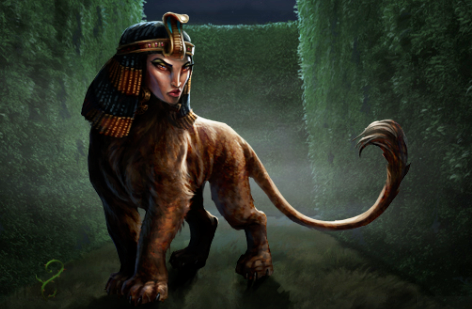
Of course, with all the spells and enchantments we have today that we use for protection, why would a sphinx be so relevant to us? Think of it this way. Not every witch or wizard is as proficient at spells as others. Some spells require constant focus and upkeep. Sphinxes are excellent choices for long-term protection, especially for those who aren’t very gifted with their spellwork. They are also great choices of protection in an attempt to hold off individuals who rely solely on spells to take what they want, or if you are attempting to guard a location or item you don’t visit on a regular basis.
While it is important to solve the riddle the sphinx gives you, there may come a time that you have to defend yourself. However, as you covered in the last lesson of Defense Against the Dark Arts, no individual has been successful in protecting themselves should they incorrectly answer a riddle. It is best to walk away if you know you cannot answer the riddle. This will ultimately protect you the best.
Today, sphinxes are used in various settings. Gringotts Wizarding Bank uses sphinxes in several of their vaults. However this is a bit of a grievance to some of their customers. Those who are not very good at riddles often request for their vaults to be protected in a different way. It used to be illegal to own a sphinx. Many of you may know the story of Crispin Cronk, who kept several sphinxes in his yard. Though he was warned several times by the Ministry, he still continued to keep them, and so he was sent to Azkaban. Typically, they were only used by the Ministry and government-run organizations. Sphinxes that were privately owned were not permitted. Of course, now any business with an approved permit can own one within good reason, however, it wasn’t until the mid-20th century that this private ownership of sphinxes through businesses was made legal. As a disclaimer, most requests to obtain a sphinx license are rejected, and the businesses that are granted the permit typically have something incredibly precious and rare that needs to be guarded somewhere more secret than a Gringotts vault. It is important to note this is a business permit and individuals cannot apply for it.
Even Hogwarts has made use of sphinxes before. In the Triwizard Tournament of 1994-1995, a female sphinx was used during the third task. She was placed in the closest and fastest route to get to the Triwizard Cup, and was the last creature the champions were to face. Perhaps you even recall the riddle that was used? For those that are arachnophobes, I encourage you to think of something else at this moment.
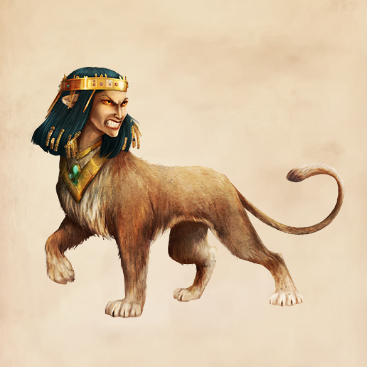
And that’s it from me today. I will now hand over the remainder of the lesson to Professor Anne who will introduce the next creatures, so give her your full attention please. I will see you all again for the next lesson, and it’s one you won’t want to miss, stay tuned!
Good day, students! I hope you enjoyed Professor Cattercorn’s lecture on the sphinx. Such an interesting creature. In my retirement, I would love to own one, but I don’t have anything worthy of being guarded by them. Maybe I’ll find a rare gem on one of my dragon trips and Professor Cattercorn and I can create a business so I can apply? My, I have gone off topic already and we still have two more creatures to cover! I will be discussing griffins and Runespoors with you today. Let’s start with griffins, as they will be slightly more brief than Runespoors or sphinxes.
Appearance and Behavior
Griffins are a creature that has the body, hind legs, and tail of a lion, and the head, wings, and talons of an eagle. They are not to be confused with hippogriffs, which have the rear end of a horse if you recall. Griffins are given a XXXX classification by the Ministry of Magic because of their ferocity. What keeps them from being XXXXX is that some wizards, those that are incredibly skilled, can tame them. Should a wizard be able to tame one, it will be friendly to that wizard alone.

It’s incredibly important that you do not attempt to tame a griffin on your own. This will only cause a variety of issues for you, particularly because the griffin will try to attack and kill you. Should this be the case, there are two ways to protect yourself: an offering or a spell. As you have covered in Defense Against the Dark Arts, the Ensnarement Charm is rather effective against the beast. If you have forgotten how to cast one, I have provided the spell block below. Should you need more instruction, I would recommend speaking to Professor Penrose, as I am not well equipped to help you master the spell! If you need a practice dummy however, I have fake creatures I am more than willing to let you borrow.
Spell: The Ensnarement Charm
Incantation: Irretio (eer-REH-tee-oh) creature name optional
Wand Movement: A squiggly circle that starts aimed at the surface you want the vines to grow out of and moves towards the creature to be trapped by the vines
Concentration: High
Willpower: Moderate
The second way to defend yourself against a griffin is to give it raw meat as an offering. However, you don’t want to just carry around a flank steak with you wherever you go! Griffins prefer fresh raw meat, so the three day old steak in your backpack on a hiking trip will not cut it. But, you also don’t want to carry around a live animal to process in front of the creature. Not only is that a burden on you, but the griffin will want to attack the animal, only putting you in a very dangerous situation. The best way to handle situations like this, especially if you expect to run into a griffin, is to process an animal that morning, and carry the meat around with you. If you expect to run into one for several days, I would do this daily. This guarantees you have fresh meat to provide as an offering, and you can also use the extra as a food source for yourself. When giving them the offering, don’t walk right up to them. Toss the meat gently to the side of them, causing them to turn their bodies. This will allow you to pass by them on the other side while they eat.
Like hippogriffs, you need to treat griffins with the utmost respect. As stated above, you don’t approach them or toss food at them. You toss to the side. Tossing something or moving directly towards them is seen as a sign of aggression on your part, and the griffin will respond accordingly.
Diet, Habitat, and Enemies
Griffins are mostly known for their diet: raw meat. They attack anything from small rodents like pocket mice, to large mammals like deer. Watching them eat can be frightening, considering they just dig right in. Their ferocity is truly apparent when they eat. Even the most skilled wizards should steer clear of a griffin at this time.
The creatures are native to Greece, though they’ve now been exported around the world. Their native range has also grown over the years, as they have flown to other areas, and can now be seen in most countries of Europe. However, there is one place you will never find them: around horses. This is something Muggle mythology got right! Horses and griffins are mortal enemies.
Reproduction and Lifespan
Griffins have a reproductive cycle fairly similar to that of hippogriffs. This makes sense considering how hippogriffs came to be! A nest is built, a mate is found, an egg is laid, and the egg typically hatches within 24 hours. Griffins mate for life, like many other creatures we have covered. After their partner dies, they will not mate again. The offspring are able to fly within a week of hatching, but choose to stay with their parents until they are about eight months old.
Griffins actually have a fairly short lifespan compared to other creatures. On average, they only live about twenty years. This is for a variety of reasons, but one in particular stands out: their body cannot handle their weight. Griffins weigh an average of 500 pounds, and have to eat a lot of meat to have the energy to support that. By the time they are ten or fifteen years old, they don’t have the strength to continue hunting to that extent. Think about when we age. We slowly deteriorate, our strength decreases, and our muscle mass goes down. The same happens to a griffin. Without the strength to fly and hunt, the griffin ultimately passes away.
Uses in the Wizarding World
Like sphinxes, griffins are often used to guard treasures, and sometimes people. Unlike sphinxes, they don’t ask the intruder riddles; rather, they just attack them. We already discussed the appropriate measure to take in this scenario above, but I do feel it is important to note that guarding something makes griffins extra ferocious. They have a purpose, and they will do everything in their power to protect what they have been given. It is for that reason that I suggest just using the Ensnarement Charm, rather than the offering. The offering is best for encountering them in the wild.
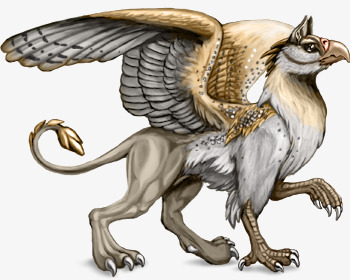
Alright, let us move on to the Runespoor, one of my favorite creatures. I just love all their heads!
Appearance and Behavior
A Runespoor is a snake with three heads native to the African country Burkina Faso. Burkina Faso is located in West Africa. With adults averaging between six and seven feet long, the Runespoor is a snake with an orange base and black stripes, and a yellow to white underbelly. Runespoors can live a fairly long life, often well over thirty years. However, you won’t see them living past fifty. This is because of some interesting tactics two of the heads use against the other, which we will discuss in just a few moments.
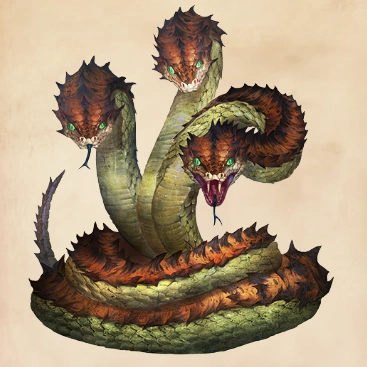
Runespoors have been given a XXXX rating by the Ministry of Magic for numerous reasons. One of the most significant reasons is their relations with Parselmouths and Dark wizards. We have the information we do because of the writings of Dark wizards and their conversations with the heads. Another reason they have been given such a high classification is because they are venomous. However, only the right head is venomous. Make sure to remember, it is your right, not the snake’s. Should you be bit, the puncture will often become infected and ooze green pus for several days. During this time, the individual may experience hallucinations and muscle spasms. It is incredibly important that you go to a healer should you be bitten, because if left untreated their bite can be fatal. This leads to the third reason Runespoors are given a XXXX rating: they will eat or attack humans. Finally, the last reason Runespoors are given a XXXX classification is because of their heads. Each head serves a purpose. The left head is the planning head, deciding where the Runespoor will travel and what it should do in particular situations. The middle head is the dreamer of the three: it creates visions for the others, often causing the creature to not move for several days as it watches. The right head, besides being the venomous one of the three, is the critic. It criticizes what the other heads do, often through a low hissing noise. If the right head becomes too much, the left and middle heads will bite it off.
Diet and Habitat
Runespoors are exclusively carnivorous. They, like griffins, will attack anything from small mammals up to large ungulates, or hooved mammals, like antelope. The three heads share the meal, as ultimately it is ending up in the same stomach. The left head decides which creature to go after and the plan of attack, the right head attacks the animal, and the middle head just watches. All three feast on their meal until it is finished, with traditionally the right head receiving the last bite since it used its venom to kill it. Should you run into one, it will attempt to eat you.
Now, where they live in Africa is mostly plains with some forested areas. Runespoors don’t fit in because their bright colors don’t help them blend in at all. That is of little importance to them, though. They don’t need to hide: they’re the top predator of the area. If a lion sees the heads, the heads eat it.
Reproduction and Lifespan
Now, Runespoors have an incredibly unique form of reproduction. Like many other creatures, they use eggs. However, they create these eggs in their mouths. They are the only magical creature that does this. After laying three eggs into their nest, it takes exactly 60 days for the eggs to hatch. The hatchlings are about a foot long, enabling them to hunt on their own, therefore they don’t stick around after hatching.
Now, how does the fertilization occur to form the egg? With three heads actually comes three different situations. One is male, one is female, and one is asexual. This is the only bodily system that they have three of, besides having three brains. They only have one heart, one stomach, etc. So, this means that the asexual part will make an egg, and the male and female will fertilize each other to make the other two. This means that the creature self-fertilizes itself. There is not a link between which head is which gender.
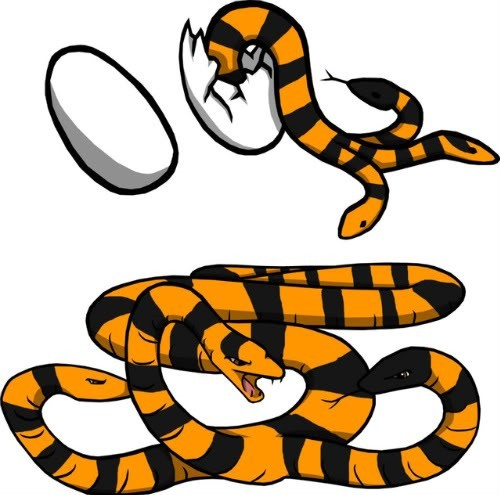
Now, as I mentioned previously, it is common to see a Runespoor without the right head. Without the hunting head, the other two can’t feed effectively because they aren’t venomous. They rely on the right head for feeding and protection, because it is the venomous one. Without it, the middle and left heads eventually starve. It takes about three days for them to begin to starve, so they end up losing strength, and then the middle head begins creating incredibly intense visions for itself and the left head. This eventually causes the creature to become too delirious to realize it is starving, and thus it passes on. They can be stuck in this delirious state for several weeks at a time before passing.
Uses in the Wizarding World
Runespoors were formerly used as guardians of important places and treasure, specifically by Dark wizards. Some other individuals chose to use them, but typically only those that can communicate with them. Otherwise, you are exposing yourself to a terrible danger. Their eggs are used in potions that assist with mental agility. Because of this, they are a staple on the black market. This has been an issue for centuries, but sadly it is something that is incredibly difficult to control.
Now, you must consider what you would do if you happened upon a Runespoor. While it is highly unlikely that you will come across one unless you are in Africa or attempting to steal treasure, it is still important to be able to defend yourself on the off chance it occurs. Sadly, your best attempt at defeating the beast is physically cutting off the right head. However, this is incredibly difficult and you will likely not succeed because you won’t be able to get close enough to be effective. Rather, I recommend avoiding them should you see them in the distance. Remember, they don’t exactly blend in, so they are easy to see. You can then redirect and protect yourself.
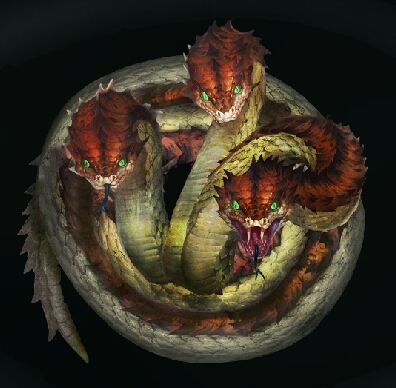
Well, we certainly covered a lot in a short amount of time! My apologies if this felt like an information overload. Professor Cattercorn and I felt these creatures should be covered together because of their likeness. Now, you have a worksheet to complete based on all three creatures. We have also provided a fun extra credit assignment if you would like to practice your riddle-solving skills! As a friendly reminder as the year comes to a close, it is important to start studying for the final exam, as well as begin finishing up your magicryptozoology report. Professor Cattercorn and I will see you for our next lesson!
All pictures are found using the Google Images search engine, and belong to their owners.
- COMC-OWL
Enroll


